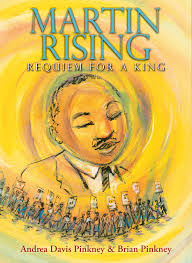Walk through the door of any bookstore, inhale deeply, and you’ll smell it. It’s the unmistakable scent of paper and ink, inspiration and action, humor and heart. Bookstores are one of my favorite places on the planet. Anytime I travel, I look up a local book store to explore and support with a purchase, and I encourage you to do the same.

This display is from Storyline Bookshop in Upper Arlington, OH. Photo used with permission.
Everyone can benefit from the soul-filling experience of holding a brand-new book in their hands; however, if you are an educator, there are many other ways you can make the most of a local bookstore visit.
As an educator myself, I have a couple of ideas to get you started thinking beyond just buying a book.
- Ask for Recommendations – You are a teacher. The fact that you are out of your mind busy during the school year is a given. You can’t possibly keep up with all of the new books coming out every month. It is part of my job to keep track, and I still struggle! Book store owners are typically dialed in to new books, best-selling books, and books that aren’t as well-known but are oh so amazing (my favorite). So while you are absolutely welcome to browse to your heart’s content, if you have a tighter schedule, don’t be afraid to ask for a recommendation.
- Ask About Educator Discounts – As teachers we have to make our pennies stretch as far as they possibly can, and a great way to do that is to ask about discounts. Some stores might provide discounts to educators who can show a work badge or other proof of employment. Others might offer teacher deals at certain times of the year. If no educator discount is available, ask about a rewards program – because you know you’re going to be a frequent customer. It’s OK. I have the same addiction.
- Communicate Curriculum Topics – You know what you and the bookstore owner have in common? A love of books and a desire to share that love with young readers. By communicating to your local bookstore that next month you will be investigating natural selection, you enable the bookstore owner to have titles on hand to support your students, to display them in a prominent area, and to recommend them to parents. Maybe you can work together to set up a special display that rotates monthly and features books that support school curriculum topics. Be sure to communicate this partnership to parents and the wider school community! The bookstore owner will benefit from new and repeating customers, you will benefit from students extending their learning outside of class, and families will benefit from engaged, eager readers.

- Request a Classroom Visit – Here’s an outside-of-the-box idea: ask the bookstore owner to visit your classroom to do a read aloud and make book recommendations. Not only does it introduce your students to new titles, it connects your classroom to the community, and it provides a point of contact so young students feel comfortable browsing in the local bookstore. Though most students won’t be able to buy books on their own, they can start dreaming about the personal libraries they would like to build in the future. (And maybe a few of those books will make it onto gift lists they share with adults in their lives.)
I wish I had a local bookstore near me. I live in a small, Iowa town, and my closest indie is an hour and a half drive from my home. So, if you have a local bookstore, please support it with your patronage, and while you are there, use some of the above suggestions to make an even closer connection.










